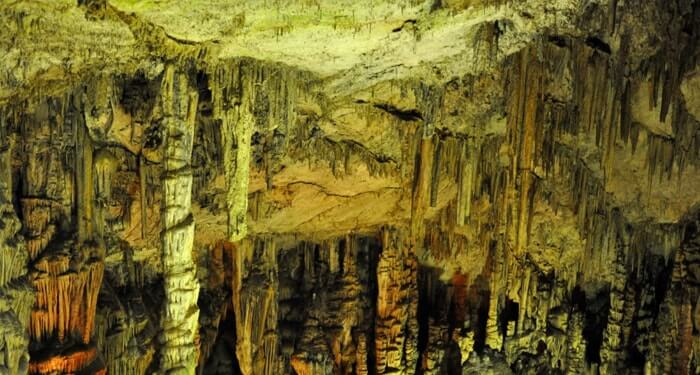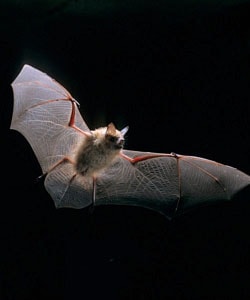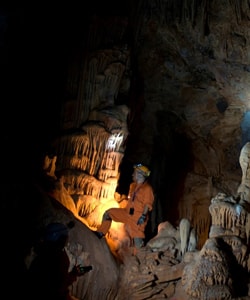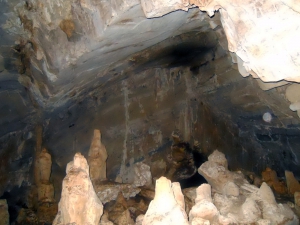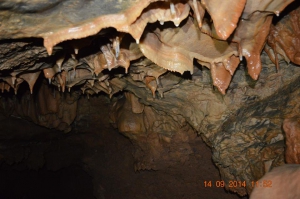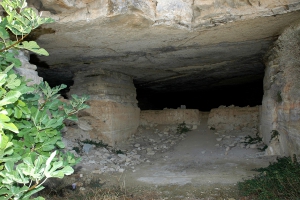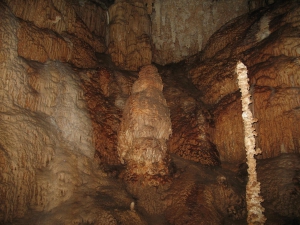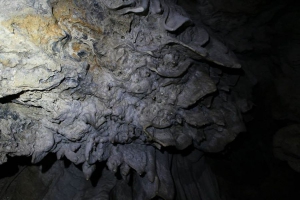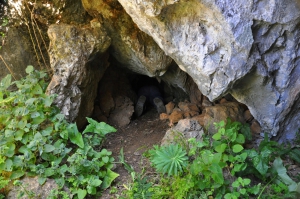Theriospilios has a total length of 44m, 25m maximum width and height 0,5 - 7m. After the entrance of the cave, the visitor enters a low hall with dimensions 7m x 8m. The following room is spectacular, with 37m length, 25m width and 1.6-7m height, with sloping floor. It is richly decorated and gives the visitor an excellent impression.
Just a few meters away from the last houses of the village Samonas, road works revealed a small cave in 1994, with rich décor and a small pond. In order to access the main room a ladder is used.
Close to village St. George at province Sitia (also known as Tourtouli ) there are the two caves Small and Large Katofygi (with the maximum length of internal routes being 100m).
Cave Lavyrinthaki is located 50km south of Heraklion, on a small hill between Plouti and Moroni. It is a small ancient quarry, with an approximately large room of 300 sq. meters, while the height at some point reaches 4m. There are several columns for supporting the roof.
It consists of two rooms with different levels and relatively rich cave decoration. Both surveys revealed pottery of Neolithic and Minoan era. Specifically, the main use of the cave as a residence focuses on Neolithic period (3650/3500 - 2900 BC) and is was reused as shelter during the Late Minoan (1300-1250 BC) period.
The Cave of Marathokefala or Marathospilios is located next to the village of Kynigiana, 29km southeast of Rethymno. In Mylopotamos area, where it is located, several caves have been found.
The cavern of Hosto Nero is found in the region Selia of Youchtas mountain near the road that leads to the top of Afentis Christos. It is located at an altitude of about 720 meters in the southern top of the holy mountain and in order for anyone to see it he/she has to enter through a narrow hole. This cavern has 3 rooms and many corridors that connect them all with the first room of 7 meters length that has enough light because of its big opening.
Ellinospilios cave is a beautiful cave of Afrata area where significant archaeological findings have been revealed, such as tombs. In some places there are ponds with water, where bubbles float from calcareous material, considered a rare cavernous material. With the slightest water turbulence bubbles break and produce a noise like tearing of fabric.






